Looted Art
Looted art has been a consequence of looting during war, natural disaster and riot for centuries.
Looting of art, archaeology and other cultural property may be an opportunistic criminal act or may be a more organized case of unlawful or unethical pillage by the victor of a conflict. The term "looted art" reflects bias, and whether particular art has been taken legally or illegally is often the subject of conflicting laws and subjective interpretations of governments and people; use of the term "looted art" in reference to a particular art object implies that the art was taken illegally.1
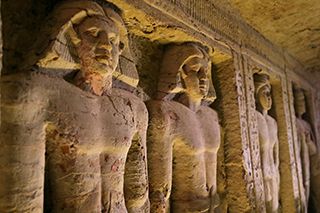
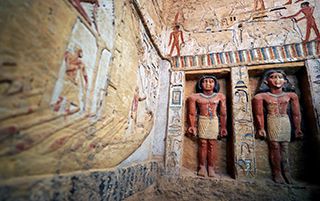
It is well known that the contents of most of the tombs of the Egyptian Pharaohs have been looted endlessly since first being built with few contents surviving into modern times.
It's a miracle that any art works survive from this period. But I am sure all of us have from time to time seen examples of Egyptian antiquities in museums and know how beautiful these works of art were. The two images above show statues from a well-preserved, 4,400-year-old tomb of a royal priest and his family that was unearthed and reported in 2018 as a “one of a kind” find by the Egyptian authorities. 2 The tomb was unearthed in Saqqara, a city south of Cairo and a vast necropolis from ancient Egypt. Thank goodness looting is a lot harder to get away with in today's world - or is it?
In the meantime back in 332BCE Alexander the Great invaded Egypt but by then the contents of nearly all the tombs of the Pharaohs were already completely looted by grave robbers.1 And so Alexander wasn't tempted.
However, although Alexander the Great might not have engaged in the crime of looting he did raze the ancient city of Persepolis3 (as shown below) which must definitely be considered as a serious crime.
In his defence, Alexander was from all accounts a decent kind of chap and came to regret the destruction his invasion caused. Coming across the plundered tomb of Cyrus the Great in Pasargad, a little north of Persepolis, he was much distressed by what he found and immediately ordered repairs to be made.3
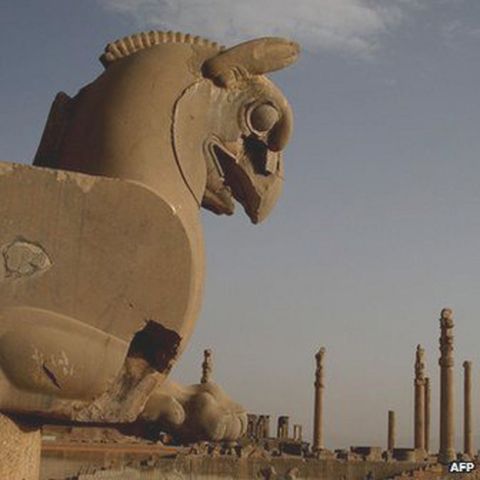
And so the story of the destruction of magnificent buildings and art works continued throughout history.
There have been a total of seven sackings of Rome. The Old Testament includes several references to looting and to the looting of art and treasures; in the Book of Chronicles it is said: "King Shishak of Egypt attacked Jerusalem and took away the treasures of the Lord's temple and of the royal palace; he took everything, including the gold shields that Solomon had made", and in the Book of Jeremiah 15:11 the Lord says: "Jerusalem, I will surely send you away for your own good. I will surely bring the enemy upon you in a time of trouble and distress ... I will give away your wealth and your treasures as plunder. I will give it away free of charge for the sins you have committed throughout your land."1
Other famous examples include the Roman Sack of Corinth in 146 BC (below), the Sack of Constantinople by the Fourth Crusade, the Sack of Baghdad in 1258, Hernán Cortés and the looting of the Aztec gold. In only some of these was the removal of artworks for their own sake (rather than the value of their materials for example) a primary motivation.1
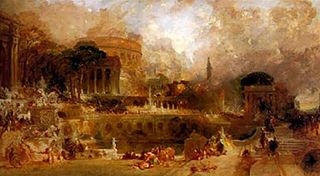
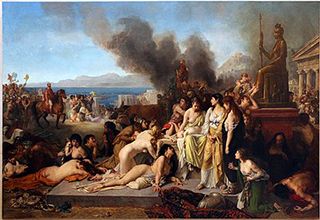
Polybius (200 - c.118Bc), a Greek historian mentions the carelessness of Roman soldiers, who destroyed works of art or treated them like objects of entertainment. However, they did show respect to the statues of Philopoemen, both for his fame and as he was the first ally of Rome in Greece. Lucius Mummius (who lead the Battle of Corinth) was extremely ignorant in matters of art — when transporting priceless statues and paintings to Italy, he gave orders that the contractors should be warned that if they lost them, they would have to replace them by new ones. As in the Sack of Syracuse, the sack of Corinth saw the inflow of many Greek works of art into the Roman world, exposing it further to Greek culture and paving the way for the development of the Greco-Roman world. 1
If you are wondering what the Romans might have taken home from Corinth, two possible examples are given below illustrating just how magnificent these early works really were. I would be more than happy to find a home especially for The Jockney of Artemision which I just love.
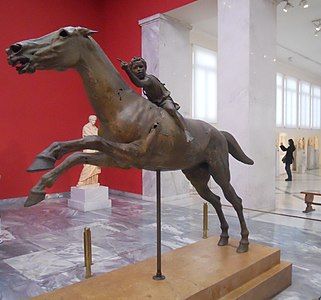
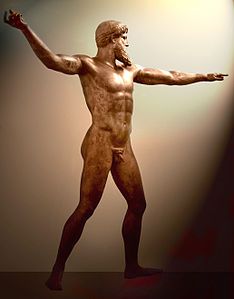
The Sack of Constantinople in 1204 happened in the context of the 4th Crusade with the aim to liberate Jerusalem from the Muslims. However, the Western Crusaders ran out of money and in order to complete the journey by sea from Venice to the Holy Land they had to borrow money from the Venetians for the building of boats. The ‘loan’ was agreed on condition that the Crusaders first went to Constantinople (a long term enemy of the Venetians). Once there, the Crusaders (and Venetians) went on the rampage, sacked the city and stole some of the most valuable Byzantine treasures including the Four Horses which are now in St. Marks’s Square, Venice.4
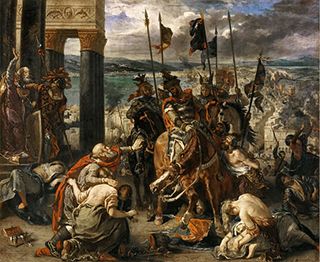
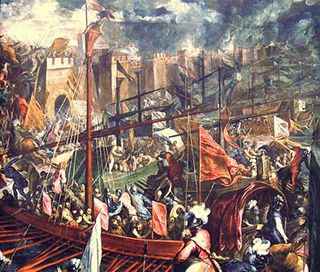
One of the msot famous examples of looting that occurred with the looting of Constantinople concerns the Horses of Saint Mark also known as the Triumphal Quadriga, a set of glorious Byzantine bronze statues of four horses, originally part of a monument in the Hippodrome of Constantinople depicting a quadriga (a four-horse carriage used for chariot racing).1
The Venetians stole the horses when they sacked Constantinople in 1204 and placed them on the facade of Saint Mark's Basilica in Venice.
Then in 1797 along came Napolean and following the Fall of the Republic of Venice due so some pretty fancy footwork on behalf of the French (as Venice was neutral in the war between France and Austria) Napolean plundered Venice (including cutting frescoes out of the walls) and amongst the booty were the four magnificent bronze horses which were taken back to Paris.
They were however returned to Venice in 1815 and now are housed in the interior of St Mark's for conservation purposes, with replicas in their position on the loggia.1
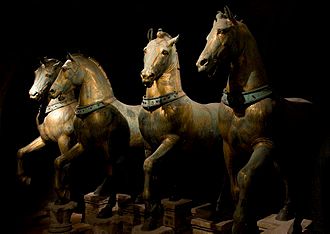
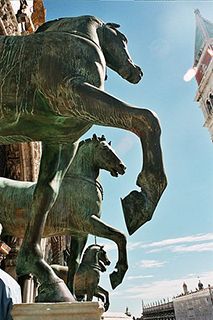
We will return to look at other examples of the looting of art works in more modern times but next in the series we will tell you the tale of the first art heist involving several European countries plus an artist, a Medici banker and a Polish councillor who woked as a pirate on his days off from helping to run Danzig!!! Coming up soon.
Credits
1. en.wikipedia.org
2. Iliana Magra, Egypt Unearths Tomb of Royal Priest From 4,400 Years Ago Dec. 16, 2018, nytimes.com/
3. Prof Ali Ansari, Alexander the not so Great: History through Persian eyes,
Institute of Iranian Studies, St Andrews University, 15 July 2012. bbc.com
4. quora.com

